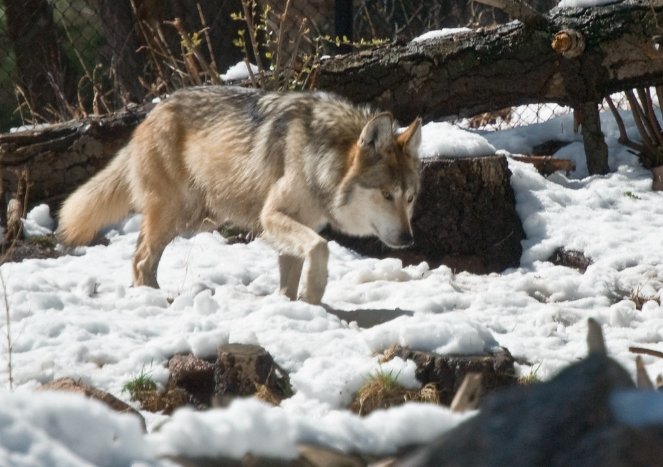Colorado voters approved the reintroduction of gray wolves in the state in November 2020, making it the first state to do so by popular vote. Since then, the Colorado Parks and Wildlife (CPW) has released 10 wolves in two locations in the western part of the state, as part of the Gray Wolf Reintroduction Program. The wolves are equipped with GPS collars that record their locations every four hours and transmit the data every 16 hours. The CPW hopes that the wolves will help restore the ecological balance and biodiversity of the region, as well as provide opportunities for education, research, and recreation. However, not everyone is happy with the presence of the wolves, especially ranchers and hunters who fear for their livestock and game animals. The CPW has also faced legal challenges from some groups who oppose the reintroduction plan. In this article, we will explore the different perspectives and issues surrounding Colorado’s gray wolves.
The Benefits of Wolves
Wolves are often considered as keystone predators, meaning that they have a significant impact on the structure and function of the ecosystems they inhabit. Wolves prey on large herbivores such as elk, deer, and moose, which in turn affects the vegetation, soil, water, and other wildlife in the area. For example, in Yellowstone National Park, where wolves were reintroduced in 1995, researchers have observed changes such as increased growth of willows and aspens, reduced erosion and sedimentation, improved stream flow and water quality, and more diversity and abundance of birds, beavers, fish, and amphibians . Wolves can also help control the spread of diseases such as chronic wasting disease, which affects deer and elk populations.

The CPW expects that the reintroduction of wolves in Colorado will have similar positive effects on the environment and the economy. According to the CPW, wolves can enhance the state’s natural heritage, attract more visitors and tourists, and generate more revenue and jobs. The CPW also plans to conduct scientific studies and educational programs on the wolves and their role in the ecosystem.
The Challenges of Wolves
Despite the potential benefits of wolves, many people are concerned about the risks and costs of having them in Colorado. Ranchers and farmers worry that wolves will kill or injure their livestock, such as cattle, sheep, and horses, and cause economic losses and emotional distress. Hunters and outfitters fear that wolves will reduce the number and quality of game animals, such as elk and deer, and affect their livelihood and recreation. Some residents and visitors also feel unsafe or uncomfortable around wolves, especially if they encounter them near their homes or campsites.
The CPW acknowledges these concerns and has taken measures to address them. The CPW has established a Wolf Management Advisory Council, composed of various stakeholders and experts, to provide input and guidance on the implementation of the reintroduction plan. The CPW has also developed a compensation program for livestock owners who suffer losses due to wolf depredation, as well as a prevention program to help them protect their animals from wolf attacks. The CPW has also set rules and regulations for hunting and trapping wolves, as well as for reporting and responding to wolf sightings and conflicts.
The Legal Battles over Wolves
Another challenge that the CPW faces is the legal uncertainty over the status and protection of wolves in Colorado and the rest of the country. Wolves are currently listed as endangered or threatened under the Endangered Species Act (ESA) in most states, except for the Northern Rocky Mountain population, which includes Idaho, Montana, Wyoming, and parts of Oregon, Washington, and Utah. This means that wolves are under the jurisdiction of the U.S. Fish and Wildlife Service (FWS) and cannot be killed or harmed without a permit or authorization.
However, the FWS has attempted to delist wolves from the ESA several times, arguing that they have recovered sufficiently and no longer need federal protection. The FWS’s latest delisting rule, issued in October 2020, was challenged by several environmental and animal rights groups in court, and was overturned by a federal judge in February 2022. The FWS has appealed the decision and has also announced its intention to revise the rule and develop a national recovery plan for wolves.
The legal status of wolves affects the CPW’s authority and ability to manage them in Colorado. The CPW has stated that it will comply with the ESA and coordinate with the FWS on the reintroduction and management of wolves. However, the CPW has also expressed its preference for state-led management, which would give it more flexibility and control over the wolf population and its impacts. The CPW has also faced lawsuits from some groups who oppose the reintroduction plan, claiming that it violates the state constitution, the wildlife trust doctrine, and the public trust doctrine. These lawsuits are still pending in court.
The Future of Wolves
The reintroduction of gray wolves in Colorado is a complex and controversial issue that involves multiple interests and values. The CPW aims to balance the ecological, economic, social, and legal aspects of the issue, and to achieve a successful and sustainable coexistence of wolves and humans in the state. The CPW has set a goal of establishing a population of at least 250 wolves by 2030, and to monitor and manage them according to the best available science and public input. The CPW also invites the public to participate and engage in the wolf reintroduction program, by providing feedback, suggestions, and information, and by following the rules and guidelines for living with wolves.
The future of Colorado’s gray wolves depends on many factors, such as the biological, environmental, and human factors that affect their survival and reproduction, the legal and political factors that determine their status and protection, and the social and cultural factors that influence their perception and acceptance. The future of Colorado’s gray wolves also depends on you, the reader, and how you choose to learn about, interact with, and support or oppose them.














